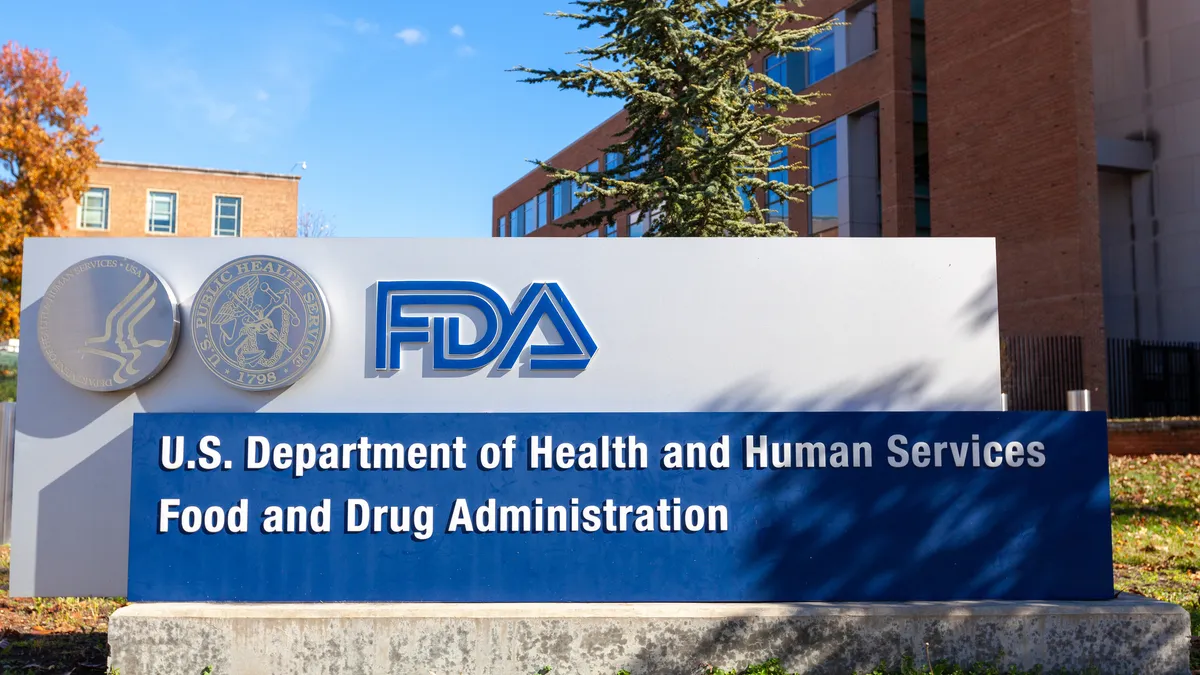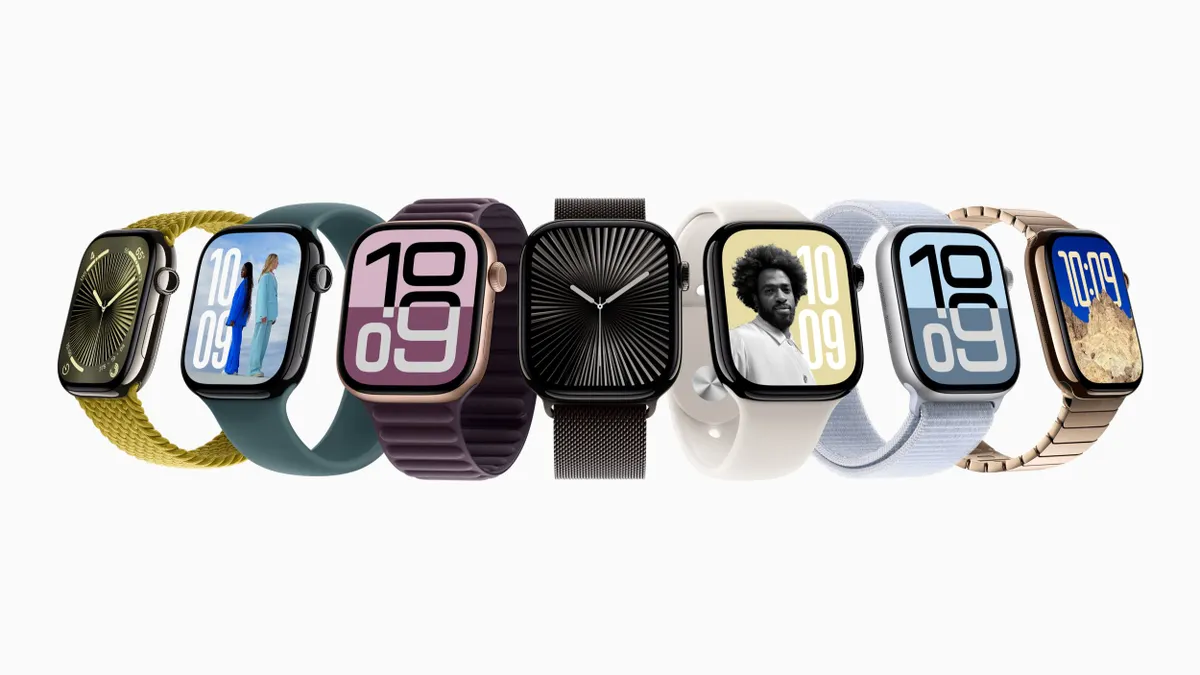After helping establish the FDA's Digital Health Center of Excellence in 2020, Bakul Patel was recently promoted to a new role.
As chief digital health officer of global strategy and innovation, Patel's tasked with helping the Center for Devices and Radiological Health (CDRH) meet its 2022-2025 strategic priorities that it shared last week, through the lens of advancing digital health.
CDRH Director Jeff Shuren in announcing Patel's promotion noted that under his leadership the center's digital health capabilities and services "grew significantly" and that in the new role he will continue to grow and advance the work of the digital health center, working with stakeholders both nationally and internationally.
At the same time, digital health has a prominent role on the FDA's list of planned guidances for 2022, including how to handle changes in algorithms as well as long-awaited guidance on clinical decision support tools. The FDA last year also issued its first action plan for AI- and machine learning-based devices, including how to make these systems transparent to users, and how to support good machine learning practices.
MedTech Dive caught up with Patel about his new role and what to watch for on the horizon as these discussions culminate into guidance.
This interview has been edited for clarity and brevity.
MEDTECH DIVE: You recently were promoted to chief digital health officer of global strategy and innovation. How do you view your new role and what are your priorities stepping into it?
BAKUL PATEL: This new role was primarily created for enhancing the implementation of one of the strategic priorities in our 2022 - 2025 strategic priorities that we published last week. This role allows me to focus on that priority and on advancing health equity. As you know, digital health technologies are suited nicely to meet people where they are, and I think that's what excites me about this new role.
I also feel like my passion toward advancing health equity aligns really well with the strategic priorities. I'm excited about taking what I've learned about digital health and how that promise of digital health can reach people where they are, and can actually be something that can be implemented. I'm looking forward to seeing where we can lean forward and now establish expectations from research and really advance this field.
On that note, I noticed that health equity was something you had commented on in your action plan last year. How are you thinking about how to approach that, and where the FDA can have a role?
PATEL: It's exciting to see that, in the last few years, digital health and technologies that are under the umbrella of digital health — it's either an app, it's a wearable, etc. — are now reaching people that we normally did not reach. Now, we're also seeing those technologies being used in care, and we want to accelerate that further. So, that's one aspect.
The second aspect of it is last year we published guidance on technology used in clinical trials. That's another great example of how digital health technologies can help reduce not just the burden on clinical trials, but also reach people that normally would not be part of trials.
Mental health care can now reach people where they are through the use of connectivity, software and other means of technology. I think that's sort of exciting.
It's too early to say exactly how we're going to frame this, but I think those are some initial threads that we can pull on.
We've been following the pre-certification pilot program, and Pear Therapeutics, Apple, and a couple of other companies have gone through that. Do you have any updates on where that is right now or what you've learned from that process so far?
PATEL: We set out to explore a new paradigm for technologies that are evolving at a much quicker rate than other technologies are. Theoretically, digital health technologies and software involve going further at different rates, and when you layer on top of it AI and machine learning, they also evolve very quickly. So, we set out with this program and we put out a few concepts.
We have found two fundamental things. One is this concept about having a really nimble, tailorable paradigm; absolutely that's number one. Number two, we also learned things that we would like to do or feel that balances the need for FDA independent oversight, that a standard of safety and effectiveness can still be maintained with the paradigm that we explored. However, those concepts that we explored cannot be achieved in our current regulatory paradigm. We don't have the authority to do that. And I think that's sort of the next step of the program.
You probably have heard folks from the FDA talk about how we are writing a report on the learnings from the program.
So, essentially, the ability to adjust for how much software or an app might change over time?
PATEL: One of the key tenants of the program was we wanted to move away from this concept of an episodic way of looking at products and putting them in the market and waiting for signals to come back, and come up with a paradigm that's much more fluid much more continuous across the entire lifecycle of that product. So, that becomes more real when you have solutions and products that are evolving on a much more frequent basis.
Let's talk a little bit more about some of the plans that you all shared last year related to AI and software as a medical device. I noticed that you plan to issue a draft guidance about how to handle changes in the future, the change in control plan. How is that coming together?
PATEL: The guidance is one of the guidances on our priority list to publish. The team is working really hard on publishing that draft guidance. The idea emerged from this concept of — for a changing product — how can we as a regulator assure it's changing within the confines or the boundaries of what we feel addresses the risks to patients?
From a safety perspective, and then from an effectiveness perspective, you can imagine changes could happen that could go from indicated for condition one and you know, over time, the changes could be for condition two. We wanted to draw those two parallels, two dimensions, and say if manufacturers or makers of this product can predefine some of those changes to anticipate as much as they could anticipate — while we are authorizing the product to go to market — we could allow them to sort of make those changes with no special controls in place, right?
As the name says, pitch to me a change in control plan where the manufacturer identifies the change and engages with FDA in that review of the product to say, "this is how we're going to control those changes to maintain the safety and effectiveness boundaries that you approved it for." And those are the concepts that evolved when we put out this discussion paper in 2019 and got a bunch of feedback. People loved the idea and we also tried it with a couple of de novos during our process of reviewing them, and we found that it could be applicable for other areas and this is why we are publishing the draft guidance.
There was some discussion about best practices for developing algorithms and making them transparent. That was something that was discussed a little bit as well last year. Where do you see that going in the future?
PATEL: We had a workshop last year on transparency. The team is still distilling some of the feedback we have gotten.
I would say that there's going to be more than one thing that's going to come out of it. Either it's a research project, which we may be engaged in, or perhaps even an activity around just understanding how transparency for different people would mean.
I think there are lots of concepts being explored, like the model card methods and the nutrition labels concept brought up at the workshop, which were really interesting. And before we actually go out and publish a guidance, we probably want to do some homework and understand which ones will yield the best outcomes. So, I think there's a little bit more work to be done on that aspect.
Digital health has changed a lot over the last couple of years. It seems like the area has become a lot more robust in terms of the number of companies working in this space and also the stage that they're at. From your perspective, what have you seen change and how are you thinking about that?
PATEL: I'll just give you my personal opinion. I've seen the industry really embracing the science that goes behind evidence generation to really prove some of these technologies and the solutions they're bringing to actually help patients. And I think evidence-based digital health technologies is really sort of where I've seen it mature over the last few years. I think there are lots of people working in general wellness, and I've seen that same level of energy now being applied to solving real problems. So, I'm really excited about where this will go next.




















